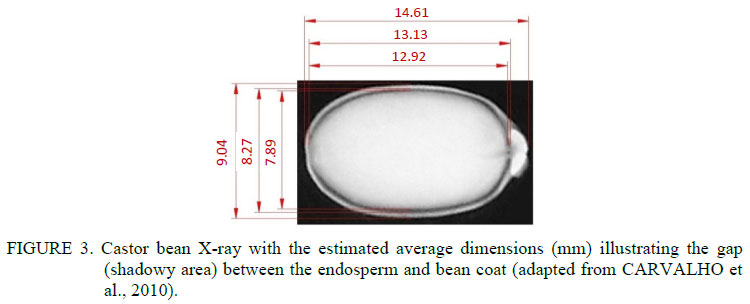In castor oil extraction process, the bean coat is abrasive to the equipment and releases substances that modify the oil color, reducing its quality. A potential solution would be to run the extraction by compressing only the endosperm. Due to lack of information, the objective of this study was to evaluate the influence of forced air drying at 40, 60, 80 and 100 ºC and farmyard drying, in the mechanical properties of the beans, aiming to break the bean coat. Castor beans were subjected to compression tests, in two perpendicular directions, at a strain rate of 0.6 mm.s-1. Average values of force, deformation energy, strain, all at rupture, and stiffness were used to evaluate the effects of dehydration. It was observed that the heat treatments did not alter the mechanical properties of castor beans, the strain and stiffness values discriminate the differences between the directions and had the lowest coefficients of variation. It was concluded that forced air drying, more costly than farmyard drying, does not bring benefits to the decortication. However, regardless the heat treatment used, the mechanical stress lengthwise is the most suitable to promote decortication.
conditioning; threshing; decortication; compression








